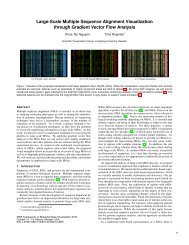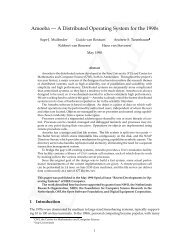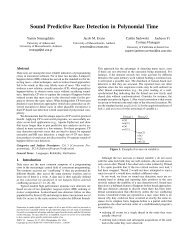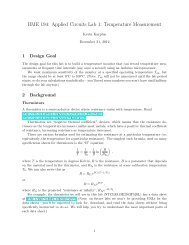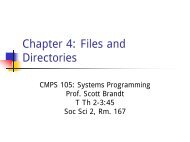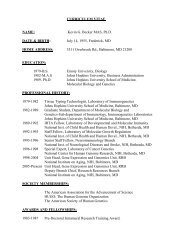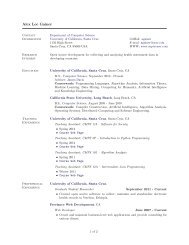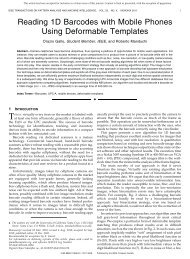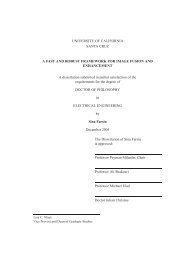Weird Languages (1) For Software Studies Michael Mateas ...
Weird Languages (1) For Software Studies Michael Mateas ...
Weird Languages (1) For Software Studies Michael Mateas ...
You also want an ePaper? Increase the reach of your titles
YUMPU automatically turns print PDFs into web optimized ePapers that Google loves.
What makes Malbolge so difficult? Like many minimalist languages, Malbolge is a<br />
machine language written for a fictitious and feature-poor machine, and thus gains some<br />
difficulty of writing and significant difficulty of reading from the small amount of play<br />
provided to the programmer for expressing human, textual meanings. However, as<br />
Olmstead points out, the mere difficulty of machine language is not enough to produce a<br />
truly devilish language. The machine model upon which Malbolge runs has the following<br />
features which contribute to the difficulty of the language: a trinary, rather than binary,<br />
machine model, minimalism, counterintuitive operations, indirect instruction coding (the<br />
meaning of a program symbol depends on where it sits in memory), and mandatory selfmodifying<br />
code (code mutates as it executes, so it never does the same thing twice).<br />
These factors account for the two years that passed before the first Malbolge “hello,<br />
world” program appeared.<br />
By commenting on the nature of programming itself, weird languages point the way<br />
towards a refined understanding of the nature of everyday coding practice. In their parody<br />
aspect, weird languages comment on how different language constructions influence<br />
programming style, as well as on the history of programming language design. In their<br />
minimalist aspect, weird languages comment on the nature of computation and the vast<br />
variety of structures capable of universal computation. In their puzzle aspect, weird<br />
languages comment on the inherent cognitive difficulty of constructing effective<br />
programs. And in their structured play aspect, weird languages comment on the nature of<br />
double-coding, how it is the programs can simultaneously mean something for the<br />
machine and for human readers.<br />
All of these aspects are seen in everyday programming practice. Programmers are<br />
extremely conscious of language style, of coding idioms that not only “get the job done”,<br />
but do it in a way that is particularly appropriate for that language. Programmers actively<br />
structure the space of computation for solving specific problems, ranging from<br />
implementing sub-universal abstractions such as finite-state machines for solving<br />
problems such as string searching, up to writing interpreters and compilers for custom<br />
languages tailored to specific problem domains, such as Perl for string manipulation. All<br />
coding inevitably involves double-coding. “Good” code simultaneously specifies a<br />
mechanical process and talks about this mechanical process to a human reader. Finally,<br />
the puzzle-like nature of coding manifests not only because of the problem solving<br />
necessary to specify processes, but because code must additionally, and simultaneously,<br />
double-code, make appropriate use of language styles and idioms, and structure the space<br />
of computation. <strong>Weird</strong> languages thus tease apart phenomena present in all coding<br />
activity, phenomena that must be accounted for by any theory of code.<br />
(1) Parts of this article are based on a paper (<strong>Mateas</strong> and Montfort 2005) that Nick<br />
Montfort and I presented at Digital Arts and Culture 2005.<br />
(2) “Esoteric” is a more common term for these languages, but it is a term that could<br />
apply to programming languages overall (most people do not know how to program in<br />
any language) or to languages such as ML and Prolog, which are common in academia<br />
but infrequently used in industry. A better designation might be art languages. However,




